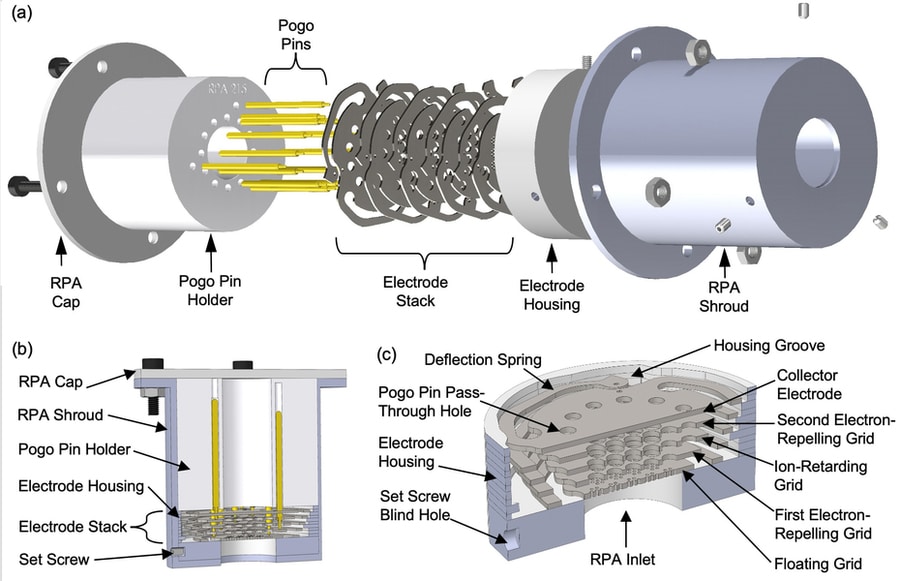Doing just about anything in space is expensive, but a team of MIT scientists has found a way to cut some costs – and possibly help accelerate climate change research. The team developed what MIT says are the first 3D-printed plasma sensors for orbiting spacecraft that work just as well as much more expensive semiconductor sensors.
The plasma sensors, also known as retarding potential analyzers (RPAs), can detect the chemical composition and ion energy distribution in upper atmosphere plasma.
Researchers developed plasma sensors using a printable, glass-ceramic material known as Vitrolite. The material is said to be more durable than traditional sensor materials like silicon and thin-film coatings. By using the 3D printing technology, the researchers were able to create sensors with complex shapes that can withstand the wide temperature swings a spacecraft would encounter in lower Earth orbit.
Vitrolite can withstand temperatures as high as 800 degrees Celsius without breaking down, whereas polymers used in semiconductor RPAs start to melt at 400 degrees Celsius.

Researchers say the state-of-the-art plasma sensors that use semiconductors are manufactured in a cleanroom, which makes them expensive and requires weeks of intricate fabrication. By contrast, making them with 3D printing and laser-cutting takes only a matter of days and costs tens of dollars.
Due to their low cost and speedy production, the sensors are ideal for CubeSats. These durable, precise sensors could be used effectively on inexpensive, lightweight satellites, which are commonly utilized for environmental monitoring or weather prediction.
For tests, researchers prototyped four unique designs. One design was especially effective at capturing and measuring a wide range of plasmas, like those a satellite would encounter in orbit. And another was well-suited for sensing extremely dense and cold plasmas, which are typically only measurable using ultraprecise semiconductor devices.
The high precision could enable 3D-printed sensors for applications in fusion energy research or supersonic flight. The rapid prototyping process could even spur more innovation in satellite and spacecraft design, says Luis Fernando Velásquez-García, a senior author of the paper on the sensors.
In the future, reducing the thickness of layers or pixel size in glass-ceramic vat polymerization could make complex hardware that is even more precise. In addition, fully additively manufacturing the sensors would make them compatible with in-space manufacturing. Velásquez-García also wants to explore the use of artificial intelligence to optimize sensor design for specific use cases, such as greatly reducing their mass while ensuring they remain structurally sound.
MIT researchers develop low-cost, 3D-printed plasma sensors for satellites
Source: Global Access News

No comments:
Post a Comment